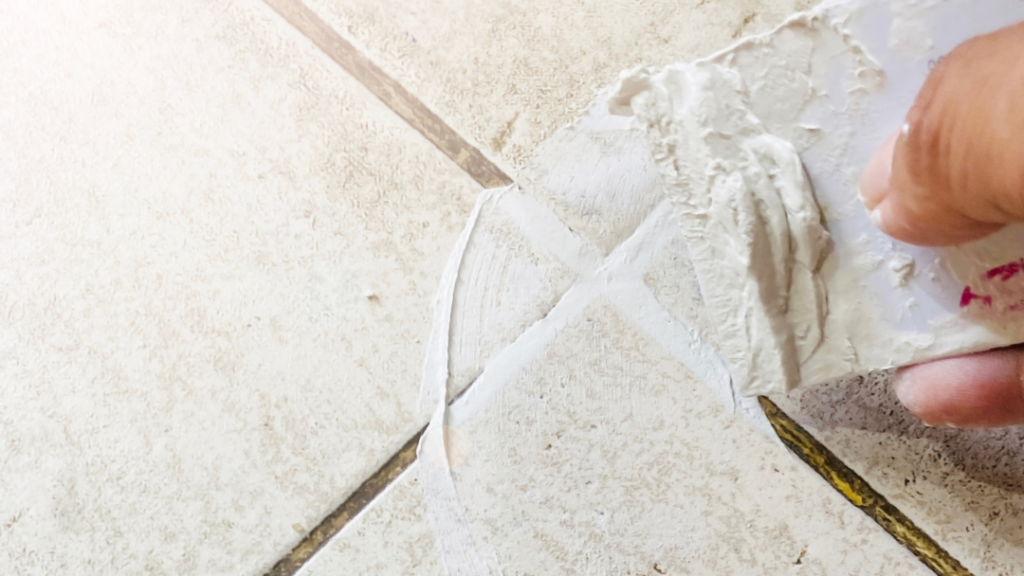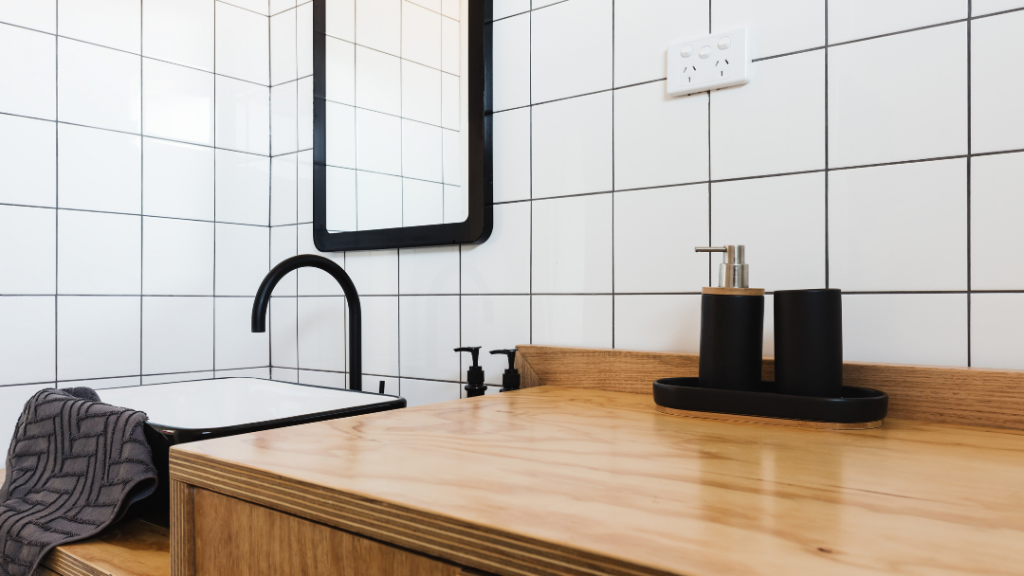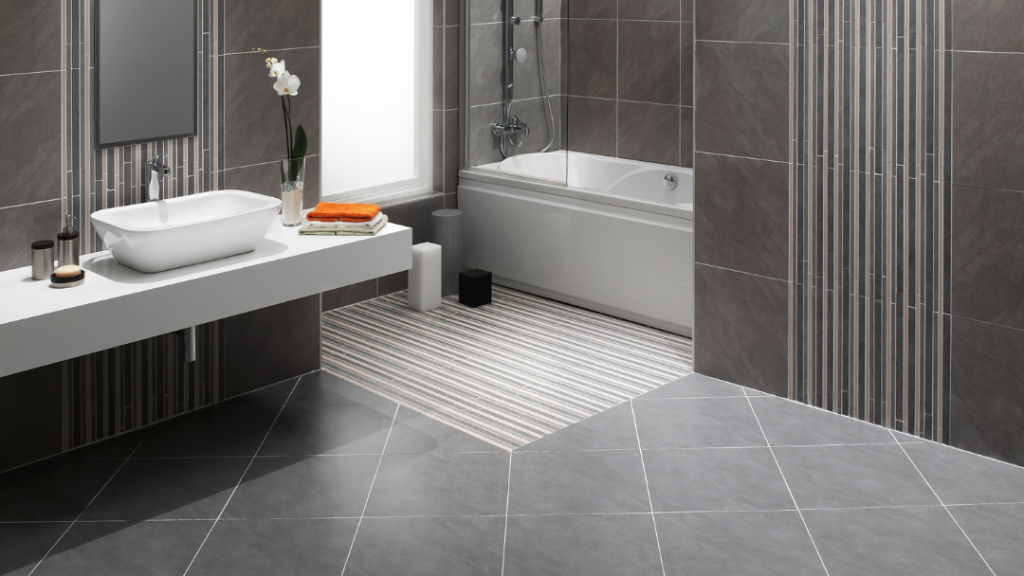How to select the right grout color for my porcelain tiles? It’s a common question without a one-size-fits-all answer. The secret lies in understanding the various factors that influence the overall appearance, and making a well-informed decision that showcase the aesthetic you envision for your space.
Once you understand these key factors, you are ready to experiment and have fun with different options!
What is Grout?
Grout is a mixture used to fill the spaces between tiles once installed. It provides stability, prevents moisture from seeping underneath the tiles, and helps to avoid movement or cracking along the edges.

Two Main Types of Grout
Cement-Based Grout: This is the most common type of grout, available in both sanded and unsanded versions. Sanded grout is ideal for wider joints, while unsanded grout is suitable for narrow joints. It is porous and may require sealing to prevent stains.
Epoxy Grout: Epoxy grout is highly durable, stain-resistant, and less porous than cement-based grout. It’s perfect for areas exposed to water, like bathrooms and kitchens, but can be more challenging to work with and typically costs more.
Grout Color: Make Or Break
Grout is more than a practical necessity; it plays an important role in shaping your interior’s aesthetic. Choosing the right color can significantly enhance or diminish the overall look and feel.
Let’s explore the 4 key factors that can guide you to select the right grout color!
1. Tile Color
When choosing grout, the color of your tiles is a primary consideration. The grout color can either complement or contrast with your tiles, influencing the visual harmony of the entire surface.
- Complementary Colors: Choosing a grout color similar to your tiles will give a unified, seamless look. This approach is excellent for making spaces appear larger and for highlighting the beauty of the tile itself.

White marble porcelain tile paired with white grout creates a seamless and elegant look.
A popular example is pairing white porcelain tiles with white grout. This combination may surprise you with its sleek and clean appearance, which brightens up the space and creates a more spacious interior. Furthermore, it offers a versatile aesthetic that is far from boring.
- Contrasting Colors: Opting for a contrasting grout color can create a striking effect, emphasizing the layout and shape of the tiles. This method works well for simple tile designs where you want the pattern to stand out.

White tiles with black grout add a dramatic and sophisticated touch.
To create a fun and vibrant atmosphere in your bathroom, consider using colorful grout options. Pink grout on white tiles or pink grout on sage-colored tiles can introduce a playful touch. Similarly, black grout on ivory tiles can add a striking contrast. Alternatively, look out for customisable grout colors, allowing you to achieve the exact shade you envision!
- Neutral Colors: If you are uncertain about the best choice, consider opting for neutral colors like beige, tan, and grey. These colors are safe options and will complement a broad range of tile colors and styles, ensuring a harmonious and versatile design.
2. Tile Finish
Tile finish also influences grout color choice. Glossy or reflective tiles might pair well with a subtle grout color to avoid overwhelming the visual effect. Matte or textured tiles can handle more pronounced grout lines, allowing you to experiment with both complementary and contrasting colors.
3. Tile Pattern
The pattern in which your tiles are laid can dictate the best grout color. Intricate patterns, like herringbone or basket weave, might benefit from a grout color that blends in to avoid visual clutter. Simpler, more uniform patterns can handle a contrasting grout color, which adds interest and highlights the geometric design.
4. Consider The Space
High-Traffic Areas: Opt for a grout color that can mask dirt and stains. Mid-tone grouts are particularly practical, as they show less wear compared to very light or very dark grouts.
Decorative Areas: Emphasise aesthetics by experimenting with grout colors to achieve the desired visual effect, whether it’s a harmonious blend or a bold contrast.
Size: For smaller areas, select a grout color that blends seamlessly with the tiles to create a cohesive look, making the space appear expansive and more open. Conversely, using a contrasting grout color in larger spaces can add depth and visual intrigue.
Tips: Test Your Grout Color!
While there are several factors to consider, don’t worry! Before final installation, apply your selected grout color to a small section of tiles – a small sample card or a corner of the space works nicely. Ensure there is adequate lighting to assess how well the grout color integrates with your tiles and entire space.

Grey tiles with white grout create a striking and bold visual contrast.
Final Thoughts
Choosing the right grout color requires considering various factors like tile color, finish, and pattern. What matters most is that you love the look of it, and it complements the personality and theme of your space.
Until our next Heritage Ceramics Guide, happy tiling!
Download the Guide: Heritage Ceramics How To Select The Right Grout Color
For further inquiries about Heritage Ceramics products and what we do, feel free to contact us at info@heritageceramics.com. We are here to assist you!
Explore more on our products: Home
Explore our Tiles On Offer: Tiles On Offer
Follow our social media pages: Facebook | Instagram | LinkedIn | YouTube


